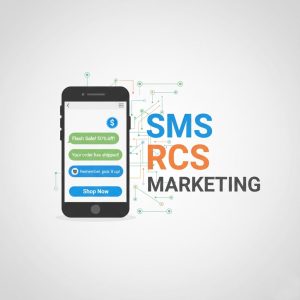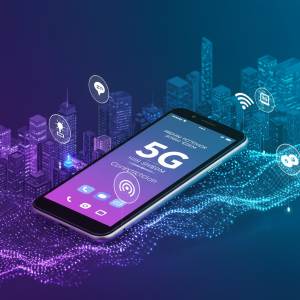Mobile Content Marketing: Your Complete Strategy Guide

Over 60% of web traffic now comes from mobile devices, yet many businesses still create content with desktop users in mind. This disconnect between user behavior and content strategy represents a massive missed opportunity.
Mobile content marketing isn’t just about making your existing content smaller or faster—it requires a fundamentally different approach. Mobile users behave differently than desktop users. They have shorter attention spans, consume content in micro-moments, and expect instant gratification.
Understanding Mobile User Behavior

Mobile users don’t just access content differently—they think differently too. Understanding these behavioral patterns is crucial for creating content that resonates.
Micro-Moments Drive Decision Making
Google identified four types of micro-moments that define mobile behavior: I-want-to-know, I-want-to-go, I-want-to-do, and I-want-to-buy moments. Each represents a different intent and requires tailored content.
During I-want-to-know moments, users seek quick answers or information. Your content needs to be immediately valuable and easily scannable. I-want-to-go moments involve local searches, making location-based content and local SEO essential.
Attention Spans Are Shorter
Mobile users typically spend less time per page than desktop users. They scroll faster, scan content more aggressively, and abandon pages quicker if they don’t find immediate value.
This means your content hierarchy becomes even more important. The most valuable information must appear above the fold, headlines need to be compelling, and your value proposition should be clear within seconds.
Context Matters More
Mobile users consume content in various contexts—waiting in line, commuting, or multitasking. Your content needs to work in these fragmented attention scenarios while still delivering meaningful value.
Key Principles of Mobile Content Marketing
Mobile-First Design Philosophy
Start with mobile constraints rather than desktop capabilities. This forces you to prioritize the most important elements and create cleaner, more focused experiences.
Design for thumb navigation, ensure buttons are large enough to tap easily, and maintain generous white space. Remember that mobile users often operate devices with one hand.
Speed Is Non-Negotiable
Page load speed directly impacts engagement and conversion rates on mobile. Users expect pages to load in under three seconds, and delays create immediate friction.
Optimize images for mobile viewing, minimize code, and leverage browser caching. Consider implementing Accelerated Mobile Pages (AMP) for content-heavy pages.
Scannable Content Structure
Mobile users scan rather than read. Structure your content to support this behavior with clear headings, bullet points, short paragraphs, and strategic use of bold text.
Use the inverted pyramid structure, putting the most important information first. Each paragraph should contain one main idea, and sentences should be concise.
Effective Mobile Content Formats
Vertical Video Content
Vertical videos perform better on mobile because they take up more screen space and feel more natural to mobile users. Platforms like TikTok, Instagram Stories, and YouTube Shorts have made vertical video the preferred format.
Create videos with mobile viewing in mind. Use larger text, clearer visuals, and ensure your message comes across even without sound, as many users browse with audio off.
Interactive Content
Interactive elements like polls, quizzes, and swipeable carousels engage mobile users more effectively than static content. They transform passive consumption into active participation.
Keep interactions simple and intuitive. Complex interactions can frustrate mobile users and lead to abandonment.
Bite-Sized Information
Break complex topics into digestible chunks. Use numbered lists, step-by-step guides, and clear sections that users can consume quickly.
Consider creating content series rather than long-form pieces. This approach allows users to engage with your content over multiple sessions while building anticipation for the next installment.
Platform-Specific Mobile Strategies
Social Media Optimization
Each social platform has unique mobile characteristics. Instagram favors visual content, Twitter rewards conciseness, and LinkedIn users prefer professional insights.
Tailor your content format, tone, and timing to each platform’s mobile user behavior. What works on desktop LinkedIn may not resonate with mobile LinkedIn users.
Email Marketing for Mobile
Most emails are now opened on mobile devices, making mobile optimization essential for email marketing success. Use single-column layouts, larger fonts, and prominent call-to-action buttons.
Keep subject lines short and compelling, as mobile email clients display fewer characters. Preheader text becomes crucial for providing additional context.
Search Engine Optimization
Mobile SEO differs from desktop SEO. Google uses mobile-first indexing, meaning it primarily uses your mobile site version for ranking and indexing.
Focus on local SEO, as mobile users frequently perform location-based searches. Ensure your Google My Business listing is complete and accurate.
Measuring Mobile Content Performance
Key Metrics to Track
Traditional metrics like page views don’t tell the complete story for mobile content. Focus on engagement depth, scroll depth, and mobile-specific conversion actions.
Track mobile bounce rate separately from desktop, as the benchmarks differ significantly. Monitor loading times, tap-through rates, and mobile-specific user flows.
Tools and Analytics
Use mobile-specific analytics tools to understand user behavior. Google Analytics offers mobile-specific reports, and heat mapping tools can show how users interact with your mobile content.
Set up mobile-specific goals and funnels to track the complete mobile user journey from initial contact to conversion.
Common Mobile Content Mistakes
Neglecting Mobile Load Times
Even compelling content fails if it doesn’t load quickly on mobile devices. Large images, complex animations, and heavy code can create frustrating delays.
Ignoring Touch Interface Design
Designing for mouse clicks rather than finger taps creates usability issues. Buttons that are too small, links that are too close together, and forms that are difficult to complete on mobile all hurt user experience.
Using Desktop Content Unchanged
Simply shrinking desktop content for mobile screens doesn’t work. Mobile content needs different pacing, structure, and visual hierarchy to be effective.
Building Your Mobile Content Strategy

Start by auditing your current content performance on mobile devices. Identify pages with high mobile bounce rates or low mobile engagement, and prioritize these for optimization.
Develop mobile-specific content guidelines for your team. Include specifications for image sizes, video formats, and writing style that work best on mobile devices.
Create a testing framework for mobile content. A/B test headlines, formats, and calls-to-action specifically on mobile devices, as results often differ from desktop tests.
Consider your mobile content in the context of the entire customer journey. Map out how mobile users discover, consume, and act on your content across different touchpoints.
Taking Your Mobile Strategy Forward
Mobile content marketing requires ongoing optimization and adaptation. User behavior continues evolving, new platforms emerge, and mobile technology advances rapidly.
Start by implementing one or two mobile optimization tactics from this guide. Test their impact on your key metrics, then gradually expand your mobile-first approach across all content channels.
Remember that mobile content marketing isn’t just about reaching mobile users—it’s about creating better, more focused content experiences that benefit all users. The constraints of mobile design often lead to clearer messaging and more intuitive user experiences.





